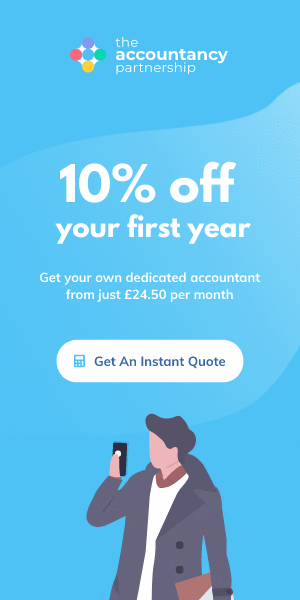Considering setting up a website, to make consumers aware of your existence, sell products and visually portray your services through some cutting-edge web design?
There are numerable advantages to creating a website for your business. However, when doing so, many overlook the importance of selecting the right template, more consumed by visual elements such as themes and colours.
Aesthetically, websites should be on point, however, an efficient user template, can be invaluable to businesses, helping to influence sales, get brands noticed, and even boost following across social channels.
See below, for reasons why not to use a one-page template for your website
Simple layouts, seem like the most obvious point of call for small businesses who’re just starting off; they look easy to navigate, don’t require much content and take half the time to maintain.
However, from an SEO point of view, a single-page format website is limited.
Publishing quality content is undoubtedly a key component to helping a website rank, whether it’s a one-page or multi-page website. However, there are numerous other SEO boosters – that are only applicable through using a multi-page format – which are needed in order to give your website the maximum chance of ranking.
See below, for the SEO drawbacks to a one-page format.
Consumers won’t know your brand – she doesn’t even go here!
Google relates one page to one singular concept, meaning if your whole website resides under the one page, then you’ll only be granted with one keyword to try and rank with.
However, if you’ve multiple pages, this will give you numerous key words to employ (throughout your site, via copy, video posts, infographics, product pages), creating more opportunities for your business to rank organically high and appear in more search results.
This means that you will be discoverable for when users search for businesses or similar services akin to yours, enabling you to exist amongst the cyber noise and rise up the ranks from page 10 to 1.
It’s confusing
A single page website may incorporate parallax scrolling to enhance fluidity of navigation, however for some users this tool won’t make viewing your content any easier.
This is because the majority of users are accustomed to clicking on hyperlinks and being taken directly to the source, of which is typically located on a distinct page, separate from the homepage.
However, when navigating a one-page template, users are simply taken further down the page, which may invoke confusion, leading users to believe an error has occurred.
This theory may be made more plausible if content is limited. Users may question the legitimacy and credibility of your business as your website may not appear ‘professional’ and ‘functional’.
Are you familiar with the saying, “good site architecture is key”?
Decent website structure is deemed essential when devising an optimal website for users to navigate; encouraged for good consumer usability, but essential for findability.
Creating an effective structure through your multi-page site, leads to a greater understanding of your site by Google, enhancing SEO.
Applying a coherent website structure enables search engines to find and index your website content quickly; indexing is essential in getting your website displayed in search results. By consistently updating your content, search engines will continue to index and deliver your website; frequent indexing improves organic search results.
Website owners can communicate which pages are of most relevance to Google through employing an effective website structure. This works well for when you’ve a new promotional product that you want to market, as you’re able to rank with and project the visibility of that page, as opposed to an outdated page.
Additionally, using sitelinks has been deemed as a huge advantage when trying to rank your website. Sitelinks are your website’s internal links that are listed under your homepage title in SERPS. Through using a one-page format, you’re unable to produce sitelinks. Wall Street Journal web influencer, Neil Patel said: “sitelinks are a huge SEO advantage…”
“They increase the navigability of your site, point users to the most relevant information, increase your brand’s reputation, improve user trust, help you dominate SERPS, increase click through rate, and shorted the conversion funnel.”
The human brain naturally craves “cognitive equilibrium” making a logical, straightforward website structure appealing and satisfying to users. This theory cannot be executed through a one-page format. Such user fulfilment, can influence users to revisit your website and shop your services in the future.
It can even affect sales – less money mo’ problems
Using a single-page website can prohibit businesses from actively creating copy – due to lack of space – which can affect social media presence.
Without engaging copy a business’ following and activity on social channels can massively decline, as users and social algorithms favour post variety, in terms of quality and reach.
Additionally, if copy isn’t constantly produced and pushed out via your website, then this can also have a negative influence on Google’s ranking system.
Not being able to rank, paired with a flawed marketing strategy makes for a behemoth financial disaster.
High bounce rate
Oppositely, when one-page websites are text-heavy, then this too can be discouraging for website users.
Users nowadays expect everything instantaneously – thanks to the onset of the Information Age – meaning they’re not willing to spend time scrolling through non-relevant information in search of a result; they’ll simply go elsewhere.
If a user can’t navigate directly to the source, then this will influence poor click through rates and low dwelling time, of which doesn’t bode well in the SERPs. Oppositely, categorising and linking content through a multi-page format, packs a punch in the SERPs.
By siloing your site, you can effectively drive traffic to the correct destinations. This will guarantee a high return rate, helping to convert browsers into customers.
Many businesses aren’t aware of what goes on behind the scenes of a website and underestimate the marketing powers a simple website template can deliver.
Are you using the right website template? Let us know what website template works best for your services – comment below.





Leave a Reply